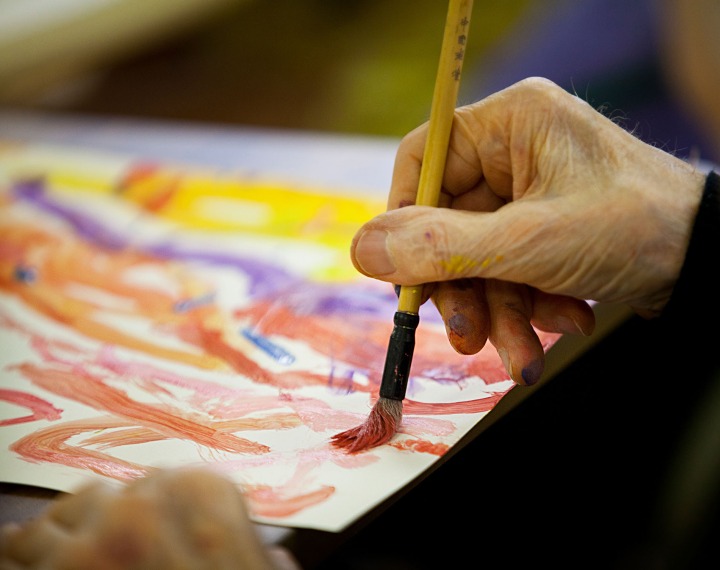Art Therapy: How Does It Work & What Are The Benefits For Dementia Sufferers?
 What is art therapy and what is it used for?
What is art therapy and what is it used for?
Art therapy is a form of psychotherapy that is used to encourage self-expression through arts and crafts, such as painting, drawing, colouring, collaging, sculpting - or any other form of art. The concept behind using art as a form of therapy is that by allowing self-expression in this way, without the need for words, expressing emotions, thoughts and feelings is easier, especially for people suffering from a developmental disability, dementia, or a mental health problem.
Art therapy is an expressive form of therapy that allows a person to improve their emotional well-being by sharing their feelings through the artwork that they create. What art therapy does is allow people suffering from certain health conditions, such as Alzheimer's Disease, for instance, to manage their behaviour and express how they are feeling without becoming angry or frustrated due to being unable to communicate these feelings verbally.
What are the main benefits of art therapy for people suffering from dementia?
As dementia develops, it causes the sufferer to forget certain memories and words, making communication difficult at times. When someone suffering from dementia struggles to be able to express how they are feeling, they can become overly stressed, angry and even violent. However, art therapy can give them the opportunity to express their emotions in a safe way, preventing the build up of these feelings resulting in an angry or violent outburst.
Another benefit of art therapy for dementia sufferers is that it can help them to remember memories that they have lost. The reason that arts and crafts help to unlock certain memories is because they stimulate the majority of the senses - this is especially true when a multi-sensory approach is taken when it comes to the arts and crafts that are on offer to care home residents.
How can art therapy benefit people living with a developmental disorder?
Many people living with developmental disorders struggle to express themselves to others, these include conditions like Autism and Aspergers. Art therapy offers a form of expression that requires no communication, it’s just a case of using art to show your emotions, which is ideal for many people who suffer from developmental disorders and struggle to verbally express themselves.
Studies have shown that the majority of people living with developmental disorders suffer from high levels of stress, anxiety and tension. Art therapy has been proven to be a fantastic way of reducing stress, tension, and anxiety, making life happier, more enjoyable, and less stressful.
What are the best options for helping your residents express themselves through art?
Now that we’ve looked at the benefits of art therapy, we are going to focus on how you can use art therapy to help your residents express themselves.
Photography: Photography is an art form that everyone can enjoy and participate in. Whether it’s nature photography or portraiture, it doesn’t matter, all that matters is that it is allowing your residents to express themselves.
Sculpting: For sculpting, playdough or plasticine is the best option, as it’s reusable and allows your residents to get creative, use their imaginations and work any stress or tension out of their minds with the motion of kneading and rolling the dough.
Drawing and painting: Both drawing and painting are calming and stimulating, helping to awaken parts of the mind that were thought to be lost forever.
Colouring: Over the past few years, adult colouring has become a big thing in the wellness industry because it’s a fantastic form of self-expression, that is an effective way to relieve stress and tension.
The chances are that your care home already has some form of arts and crafts activity on offer once a week or so. However, if you want to see all of the benefits of art therapy, allowing your care home residents to get creative more than once a week is a good idea.




